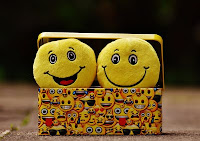Title: "10 Hilarious Riddles That Wil Tickles Kids' Funny Bones"
 |
Introduction:
10 funny Riddles for kids with answers. Riddles are not only a great way to entertain kids but also an excellent tool for enhancing their critical thinking and problem-solving skills. And when it comes to riddles, funny ones always bring a smile to children's faces. In this article, we've compiled a list of 10 side-splitting riddles that are sure to tickle the funny bones of young minds. Get ready for some laughter and brain-teasing fun!
Riddle 1:
"Why did the tomato turn red?"
Answer:
"Because it saw the salad dressing!"
Explanation:
This riddle plays on the double meaning of "turning red." While tomatoes naturally turn red as they ripen, the humor lies in the suggestion that the tomato blushed upon seeing the salad dressing.
Riddle 2:
"What has a face but cannot smile?"
Answer:
"A clock!"
Explanation:
A clock has a circular face with numbers or markings but cannot physically express emotions like smiling. This riddle relies on the personification of an inanimate object to create humor.
Riddle 3:
"What do you call a snowman with a six-pack?"
Answer:
"An abdominal snowman!"
Explanation:
This riddle uses a play on words by combining the term "six-pack" (referring to well-defined abdominal muscles) with a snowman. The result is a funny image of a snowman with a toned physique.
Riddle 4:
"Why don't scientists trust atoms?"
Answer:
"Because they make up everything!"
Explanation:
Atoms are the building blocks of matter, and this riddle humorously suggests that since atoms make up everything in the universe, they can't be trusted.
Riddle 5:
"What did one wall say to the other wall?"
Answer:
"I'll meet you at the corner!"
Explanation:
Walls meet at corners, so this riddle uses a clever twist to make it sound like the walls are planning to meet up, just like people do.
Riddle 6:
"Why was the math book sad?"
Answer:
"Because it had too many problems!"
Explanation:
This riddle personifies a math book and creates humor by associating its sadness with having too many math problems, which can be challenging for some students.
Riddle 7:
"What did one hat say to the other hat?"
Answer:
"You stay here; I'll go on ahead!"
Explanation:
Hats are inanimate objects and cannot talk or move. This riddle plays on this idea by suggesting that one hat is encouraging the other to stay in place while it goes on ahead, creating a whimsical image.
Riddle 8:
"Why did the scarecrow win an award?"
Answer:
"Because he was outstanding in his field!"
Explanation:
This riddle combines wordplay and humor by using the double meaning of "outstanding." While scarecrows are typically placed in fields to scare away birds, the riddle suggests that the scarecrow was exceptional in his chosen profession.
Riddle 9:
"What do you get if you cross a vampire with a snowman?"
Answer:
"Frostbite!"
Explanation:
This riddle creates humor by combining two contrasting characters: a vampire and a snowman. The resulting punchline, "frostbite," is a playful twist that merges elements from both.
Riddle 10:
"Why did the bicycle fall over?"
Answer:
"Because it was two-tired!"
Explanation:
This riddle relies on a pun involving the word "tired," which can mean both feeling fatigued and having two wheels. The unexpected play on words adds a humorous element to the riddle.
Conclusion:
Funny riddles are an excellent way to engage children in playful thinking while bringing.
Thanks for reading😍!









0 Comments